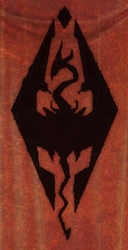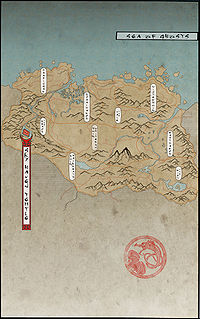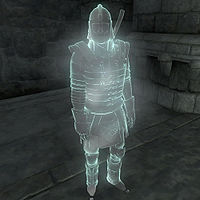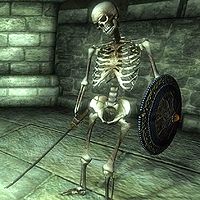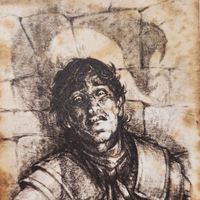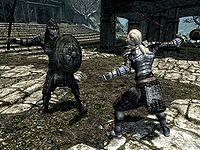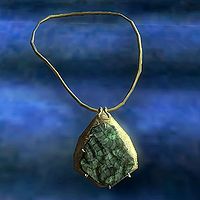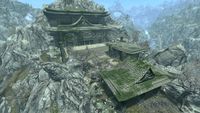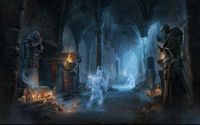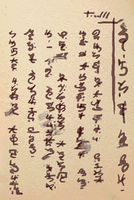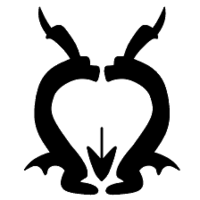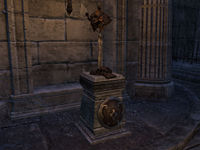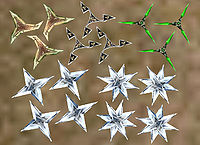Lore:Akavir
| This page is currently being redesigned for the Lore Places Project (LPP). The page may need work to meet the standards outlined on the project page. |
| Akavir | |
|---|---|
| Type | Continent |
| Continent | Akavir |
| Demonym(s) | Akaviri, Akavirian |
Akavir, also known as Dragon Land, is a continental landmass east of Tamriel, and home to the Akaviri races. The two continents have a history of animosity towards each other, with Akavir invading Tamriel several times in the past and Tamriel invading Akavir at least once.[1] Much of what is known about it in Tamriel is acknowledged to be incomplete or inaccurate.[2]
Contents
Inhabitants[edit]
There are four major nations on Akavir, each with its own race.[3] Of special note are the Tsaesci, with one source claiming that they are one of the races of Men, while another claims that the Men that did live in Akavir were all "eaten"[Note 1] long ago by the Tsaesci.[4] No mer are known to have ever lived there.
Dragons[edit]
Dragons (also known as drakes, wyrms or worms, dov or dovah in their native language, drah-gkon or dov-rha to the ancient Nords, or Aka in Ehlnofex) are a rarely-seen race of large reptilian beasts of Aedric nature. They are rumored to be from Akavir (which literally means "Dragon Land"), though there are ancient tales of Dragons also coming from Atmora. They are large, scaled creatures, easily several times larger than a human or elf. They have long, slender extremities, with thin bat-like wings and ridges of spikes along their back. Dragons have three sharp talons and one vestigial digit known as a dewclaw on each of their feet, as evidenced by the way their alphabet is written. They are regularly said to breathe fire, but more accurately, they speak it. They speak words in their language a certain way, known as a Thu'um or "Shout", to cause many effects, including elemental breaths such as fire or frost.
Dragons are well-known for their affinity for magic. It is unknown how they possess the ability to speak and fly despite their lack of lips or the fact that their wings are not naturally strong enough to support such heavy torsos. There are several varieties of Dragon that come in a range of colors. As the immortal children of Akatosh, they are specially attuned to the flow of time, and they feel an innate urge to dominate others that is near-impossible to overcome. Some sources suggest both dragons and Dragonborn are fragments of Akatosh's soul.
For more information, see the main lore article.
Kamal[edit]
The Kamal (or Kamali) are a race of snow demons who live in Akavir. The word means "Snow Hell".
The snow demons spend the winter frozen solid, but, when summer comes, they thaw out and attack Tang Mo, always unsuccessfully.
In 2E 572, the Kamal invaded Tamriel under their king, Ada'Soom Dir-Kamal, reportedly searching for a person or object they called the "Ordained Receptacle". The Kamal fleet bypassed Morrowind entirely and landed near Windhelm in Eastern Skyrim, catching the Nords off-guard and sacking the city. Oddly, the Kamal army then headed south but ignored Riften, marching into the Stonefalls region of Morrowind. There, on a beach just to the west of Ebonheart that would later be named Vivec's Antlers, they were surrounded by a Dunmer army led by Almalexia and a Nord army led by Prince Jorunn. The Kamal fought ferociously, hoping to last long enough for their fleet to arrive and evacuate them, but, at the last moment, a phalanx of Argonians joined the fray. With the aid of a tidal wave summoned by Vivec, the Kamal were obliterated by the three unlikely allies.
This was not the last Tamriel would see of the Kamal, however. Sometime before 2E 812, remnants of the Kamal invasion force who had somehow survived the slaughter at Vivec's Antlers resurfaced in Cyrodiil, seizing the Ruby Throne from the successors of the warlord Attrebus. The Kamal were soon joined by the Akaviri of Rimmen, who had previously fled to Elsweyr to avoid Attrebus' persecution. The Kamal and Rimmen Akaviri attempted to rebuild the Empire, but the effort was doomed to failure.
For more information, see the main lore article.
Ka Po' Tun[edit]
The Ka Po' Tun (or tiger-dragons) are a race of tiger-like cat-folk who live on the continent of Akavir. It is unknown to what extent they are similar or related to the Khajiit. Although all of the races have fought each other at various times, the Ka Po' Tun consider the Tsaesci to be their greatest enemies. They have recently allied themselves with the Tang Mo.
The leader of the Ka Po' Tun is Tosh Raka. He is rumored to be a divine being who was the first of his race to succeed at becoming a dragon. Although some believe the story is metaphorical, Mysterious Akavir claims that the change was indeed physical and that Tosh Raka has all the characteristics of a dragon, with a tiger-like coloring. Under the rulership of Tosh Raka, the former Po Tun were renamed to Ka Po' Tun and became a rival to the supremacy of Tsaesci. After the ultimate defeat of the Tsaesci, they plan to invade Tamriel.
For more information, see the main lore article.
Tang Mo[edit]
The Tang Mo are generous and kind monkey-folk. Tang Mo translates as "the Thousand Monkey Isles", which refers to the area where they live. There are various breeds of Tang Mo. They are very brave and simple, and many are also believed to be insane. They can raise armies when they must, for all of the other Akaviri nations have, at one time or another, tried to enslave them. So far the Tang Mo have always succeeded in defending their lands. Recently they have shrewdly allied themselves with their former enemies, the Ka Po' Tun.
For more information, see the main lore article.
Tsaesci[edit]
The Tsaesci also known as the serpent-folk or snake men, are a race originating from the continent of Akavir, east of Tamriel. While the racial status of the Tsaesci is ambiguous, with some sources claiming them as a human race while others claim them as a race of beastfolk, all known encounters with Tsaesci show they are at least a race of humanoids, with some looking indistinguishable from humans. However, the possibility of Tsaesci being shapeshifters further increases the ambiguity of their status.
For more information, see the main lore article.
Other[edit]
Early documented encounters between the Akaviri and the earliest inhabitants of Tamriel suggest that there may be Akaviri people with rat-like features, and others who are canine in appearance. This suggests Akaviri cultures that have yet to be discovered and perhaps extinct.[2]
History[edit]
Most Akaviri history is only known so far as it affects Tamriel, which means it is a story of conflict and violence, betrayal and intrigue. During time periods where they show no interest in Tamriel, they are thought to be fighting among themselves.[3]
The first appearances of the Akaviri in Tamriel are that of pirates which are now assumed to have been scouts for eventual invasions on the continent.[2] They held a hostile presence in High Rock's First Era, where pirates and raiders established themselves to the islands to the west of Wayrest around 1E 800 and were counted as enemies to the Bretons at the time.[5] Perhaps one of the earliest narratives concerning Akavir is The Story of Lyrisius, in which the eponymous General had his own army destroyed before going on to destroy an Akaviri slavetrader army through other means.[6] Thus, even the oldest tales from Akavir are about war.
Legions of Akaviri raiders invaded northern Tamriel around 1E 2700,[7] and were among the reasons the population of Wayrest moved into the Gardner's walls for protection in 1E 2702.[5] High Rock was weakened by the Akaviri invasion, with the population of the Iliac Bay being halved a third time. It is said that if Daggerfall had not been hardened and fortified through wars in its first thousand years of existence, the Iliac Bay would have been Akavirian in the present day.[8]
The most famous and important interaction between the two continents concerns the Reman Dynasty of Tamrielic emperors and their successors, the Akaviri Potentates. In 1E 2703,[9] Tsaesci forces of Akavir invaded Tamriel and were decisively defeated at Pale Pass by the army of Reman I.[2] With the Akaviri's number and their tactics boosting his ranks, Reman continued on to pacify the rest of Tamriel.[7][10] In an effort to make Cyrodiil a cosmopolitan land, Reman I blended elements of Akaviri culture with that of High Rock, Colovia, and Nibeney into a common whole.[11] As Reman's empire was also under threat from the elves, he agreed to allow the survivors of the disaster to remain in Tamriel and strengthen his army.[2] They eventually rose to positions of power and in 1E 2920, the last year of the First Era, Versidue-Shaie brought about the deaths of Reman III and his heir Prince Juilek, then took the throne as Potentate.[12][13] After his assassination by the Morag Tong in 2E 324, the empire passed to his son Savirien-Chorak, who was in turn assassinated along with his heirs in 2E 430.[11]
A second, short-lived Akaviri invasion of Tamriel occurred in 2E 572. An army of Kamal led by Ada'Soom Dir-Kamal landed in northeast Skyrim and besieged Windhelm before marching south towards Riften. Upon learning that Riften was defended by forces under the command of Jorunn the Skald-King and Wulfharth the Ash-King, Ada'Soom decided to bypass that city and attack Mournhold instead, unwittingly leading his army into a trap. A Dunmer army led by Almalexia halted the Kamal advance, and Jorunn's pursuing Nord army cut off their retreat. With the timely aid of a phalanx of Argonian troops, the combined Tamrielic force drove the Akaviri invaders into the sea to drown.[14] According to another source, the Akaviri army was destroyed not in a battle, but when Vivec intervened and flooded the land.[15] Regardless of how the Kamal were defeated, it is noted that some of their number survived and later resurfaced in Cyrodiil, where they seized control of the Imperial Throne from the successors of the warlord Attrebus.[16]
Centuries later, Tamriel would finally retaliate against Akavir. At the height of his power in 3E 288 and after twenty years of strategic preparation, Uriel Septim V launched an invasion of the continent and captured two cities, which he dubbed Septimia and Ionith.[1] The enterprise ultimately came to utter ruin at the Battle of Ionith in 3E 290.[1] Since then, the two continents have had little or no contact. The Nerevarine is thought to have gone on an expedition to Akavir, but, as of 3E 433, had not been heard from since.[17]
Around the time of the Oblivion Crisis, an enigmatic individual known as Mohi-Titona was described as the supposed Queen of Akavir, although it is unknown whether or not she is a real figure.[18]
Influences on Tamriel[edit]
Warriorhood[edit]
The martial ability of the Akaviri soldiers had a strong influence on the military hierarchies of Tamriel. The Imperial Legion benefited from the superior organization and tactical knowledge of the Akaviri, and the political and legal systems of the Empire were both improved as well.[2] The Akaviri Potentate's peculiar armorsmithing practices was said to have changed the Imperial legions forever.[19] It was an Akaviri, Dinieras-Ves, who first proposed what would become the Fighters Guild to his kinsman, the Potentate Versidue-Shaie.[20] The Empire in general benefited from the influence of Akavir.[2]
The Akaviri who served under Reman Cyrodiil were dubbed the Dragonguard, as the Dragonborn Emperor's new shock troops were renowned dragon-slayers.[21] They were masters of fire magic and alchemy.[22] This Dragonguard was the direct predecessor of the Blades, who adopted Akaviri style for their weaponry, armor and heraldry.[21][23][10] Their headquarters, Cloud Ruler Temple, is also built in the Akaviri style. The Red Dragons that have come to represent the Empire and the Imperial City were originally Akaviri war mounts.[10] A class of warriors known as Dragonknights emerged during the Interregnum of the Second Era, similarly based on the martial traditions of the dispersed Akaviri Dragonguard.[24] These warriors made use of unique magical abilities[25] said to be based on the powers of dragons.[26]
Culture[edit]
Akaviri surnames are rare and prized possessions among the Cyrodilic citizenry of today, and there are trace facial features of the Akaviri in many distinguished Cyrodilic families. Some colonies of "true Akaviri", such as Hakoshae, still exist in both the Empire and its border regions, but they are named so for their practices and customs, rather than for the purity of their blood.[10]
Weaponry[edit]
As a result of the original Akaviri invasion and their subsequent induction into Tamrielic society, the traditional weaponry of the east has been gradually integrated into common weapon design across Tamriel. Among the arsenal of the invaders was the dai-katana, katana, wakizashi, and tanto.[27][UOL 1]
The tanto is a short blade that House Telvanni wizards like to use as a matrix for their enchantments Their mercenaries often carry enchanted tantos gifted by their mage-lord patrons. The wakizashi is another short blade, but unlike the common western Tamrielic double-edged longsword, it is single-edged and more refined. These swords are rare and very few blacksmiths can craft them. The katana is a highly prized weapon that is too expensive and sophisticated to be popular with the Imperial Legion and hero-adventurers, but nobles, collectors, and swordmasters value these blades for their superior balance and effectiveness. The dai-katana, a two-handed longsword, is not common and they are generally unpopular. The throwing star is another example of Akaviri weaponry used in Tamriel.[27]
Notable Places[edit]
- Imperial Province of Akavir
- A briefly-conquered territory in Tsaesci.
- Ionith
- A Tsaesci city.
- Kamal
- A snowy nation of Akavir.
- Ka Po' Tun
- A nation of Akavir.
- Septimia
- A Tsaesci port town.
- Tang Mo
- An island nation of Akavir.
- Tsaesci
- A nation of Akavir.
Gallery[edit]
-
An illustration accompanying Against the Snakes of a person facing an Akaviri opponent with a serpent-like shadow cast over them
Notes[edit]
- A fan rendition of the continent of Akavir was originally depicted in pre-release images of the Summerset Orrery card in The Elder Scrolls: Legends. However, this artwork never made it into the final game.
References[edit]
- ^ a b c Report: Disaster at Ionith — Lord Pottreid, Chairman
- ^ a b c d e f g Pocket Guide to the Empire, 3rd Edition: Other Lands — Imperial Geographical Society, 3E 432
- ^ a b Mysterious Akavir
- ^ The Annotated Anuad
- ^ a b Wayrest, Jewel of the Bay — Sathyr Longleat
- ^ The Story of Lyrisius — Bresne Smythe
- ^ a b Legacy of the Dragonguard — Kiasa-Veda, the Chronicler of Blades
- ^ A History of Daggerfall — Odiva Gallwood
- ^ 2920, MidYear — Carlovac Townway
- ^ a b c d Pocket Guide to the Empire, 1st Edition: Cyrodiil — Imperial Geographical Society, 2E 864
- ^ a b Pocket Guide to the Empire, 3rd Edition: The Seat of Sundered Kings: Cyrodiil — Imperial Geographical Society, 3E 432
- ^ 2920, Last Seed — Carlovac Townway
- ^ 2920, Evening Star — Carlovac Townway
- ^ Jorunn the Skald-King — Helgreir Lute-Voice, Bard of Windhelm
- ^ Varieties of Faith... — Brother Mikhael Karkuxor of the Imperial College
- ^ Pocket Guide to the Empire, 1st Edition: The Elsweyr Confederacy — Imperial Geographical Society, 2E 864
- ^ Rumors in Cyrodiil during the Oblivion Crisis
- ^ Thurindil's dialogue in Oblivion
- ^ Serpent Strand item description in ESO
- ^ History of the Fighters Guild
- ^ a b The Book of the Dragonborn — Prior Emelene Madrine
- ^ The Siege of Ald Marak — Siege-Master Germia Demetrius
- ^ The Rise and Fall of the Blades — Anonymous
- ^ Legacy of the Dragonguard — Kiasa-Veda, the Chronicler of Blades
- ^ Ardent Flame: Draconic or Endemic? — Gabrielle Benele
- ^ Mythical Beast, Real Powers — Drusus Ovicula, Proctor of the Imperial Library
- ^ a b Garothmuk gro-Muzgub's dialogue in Morrowind
Note: The following references are considered to be unofficial sources. They are included to round off this article and may not be authoritative or conclusive.
|
||||||||||||||||||||
